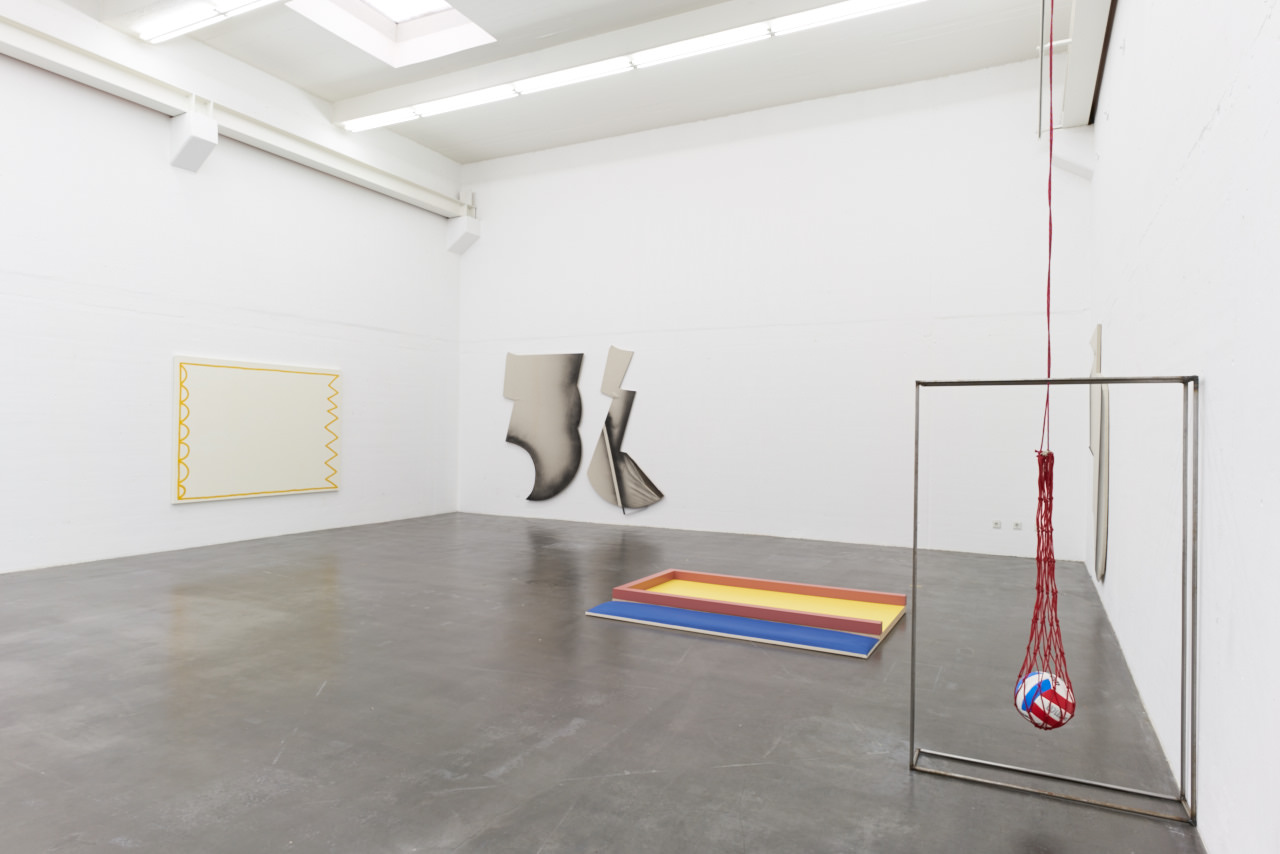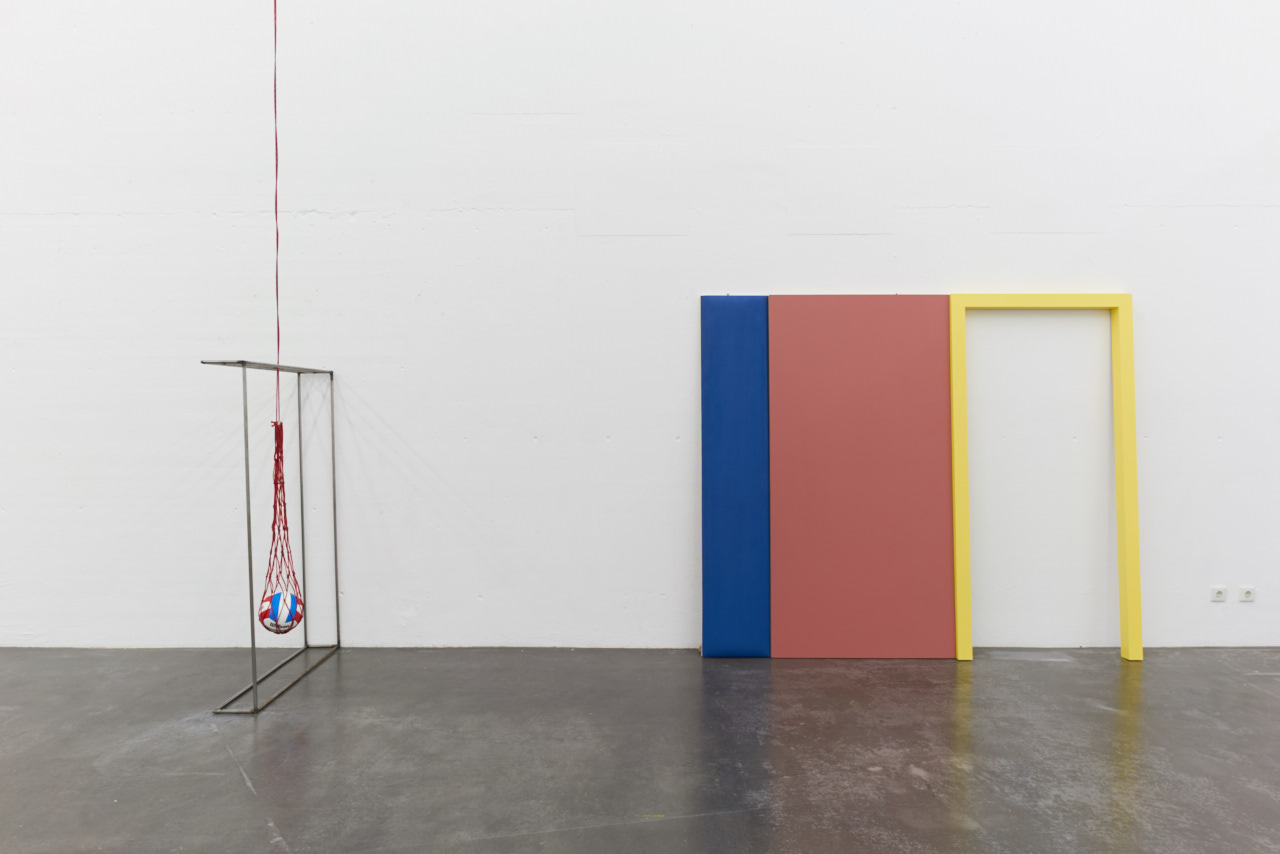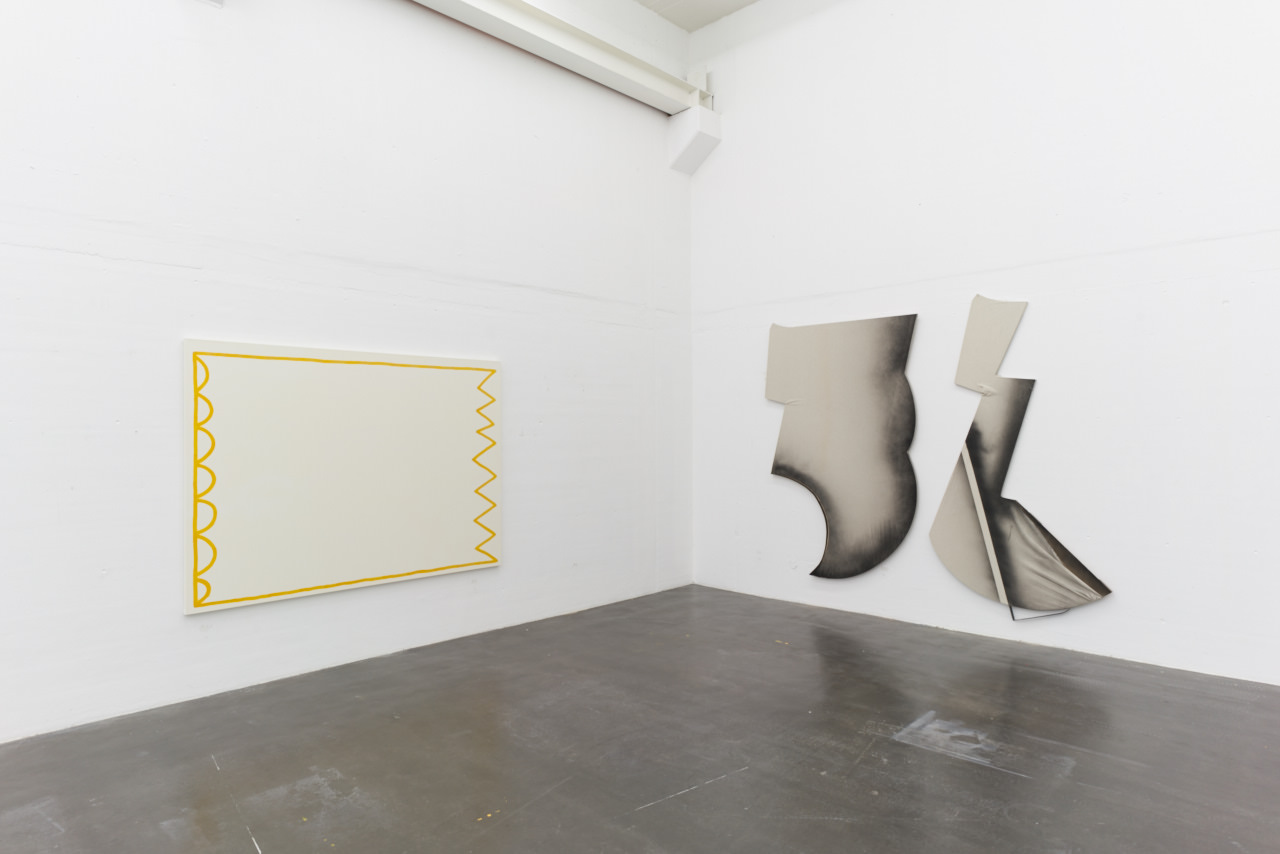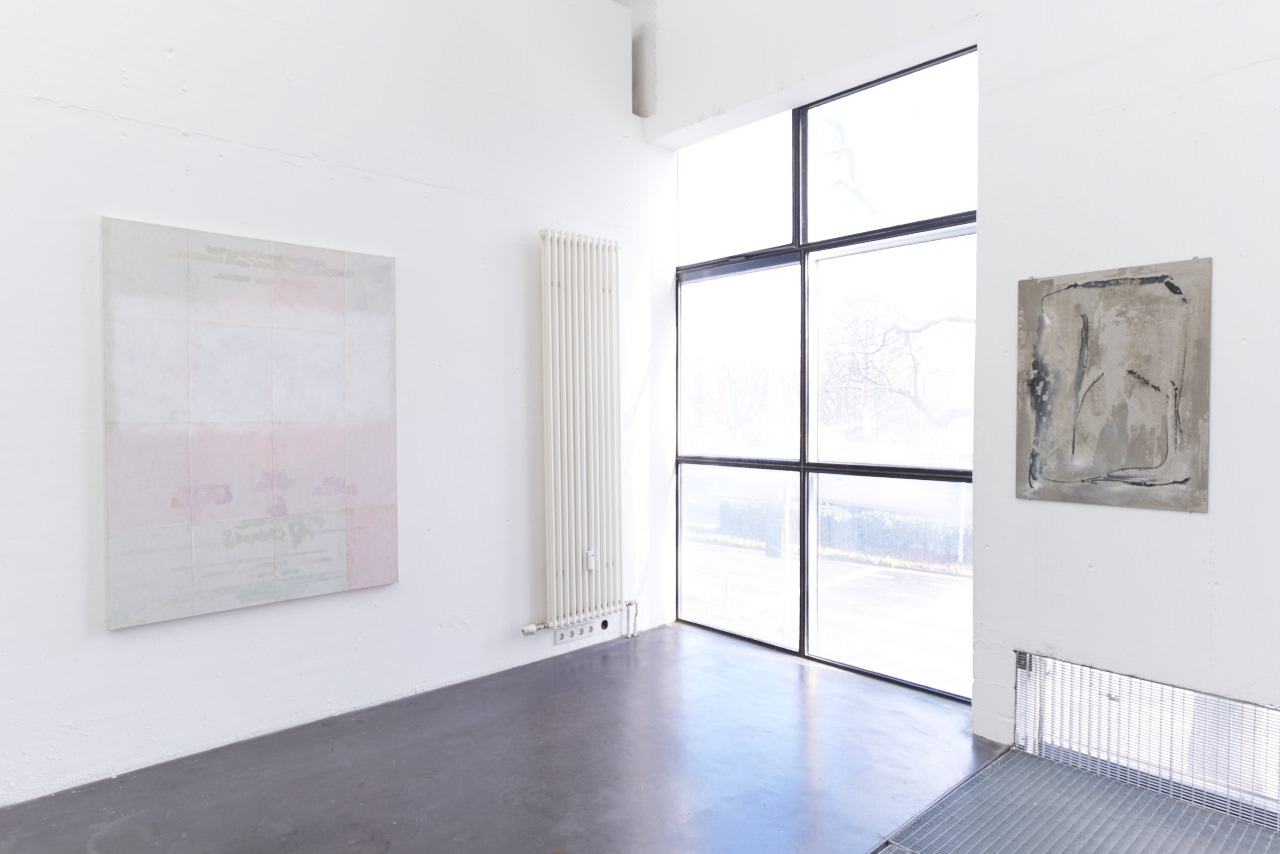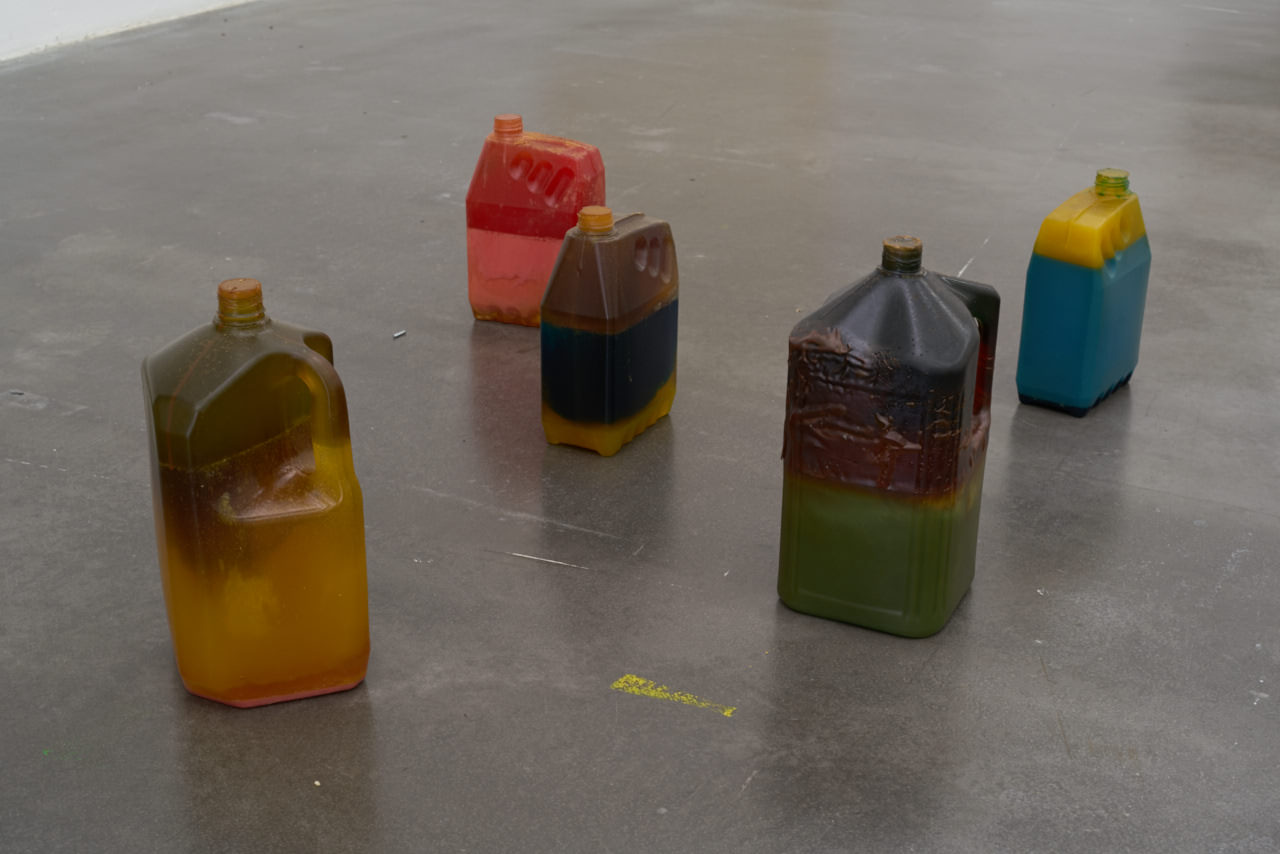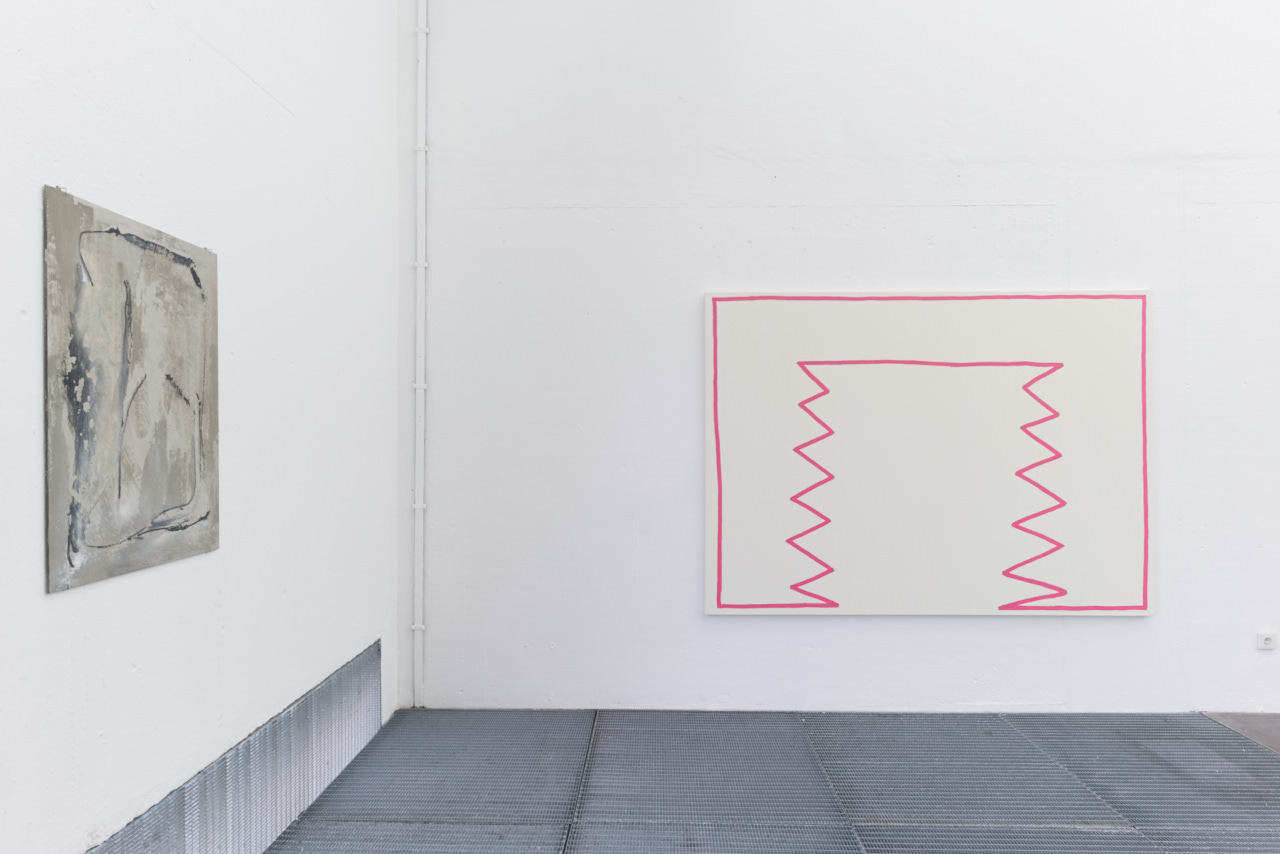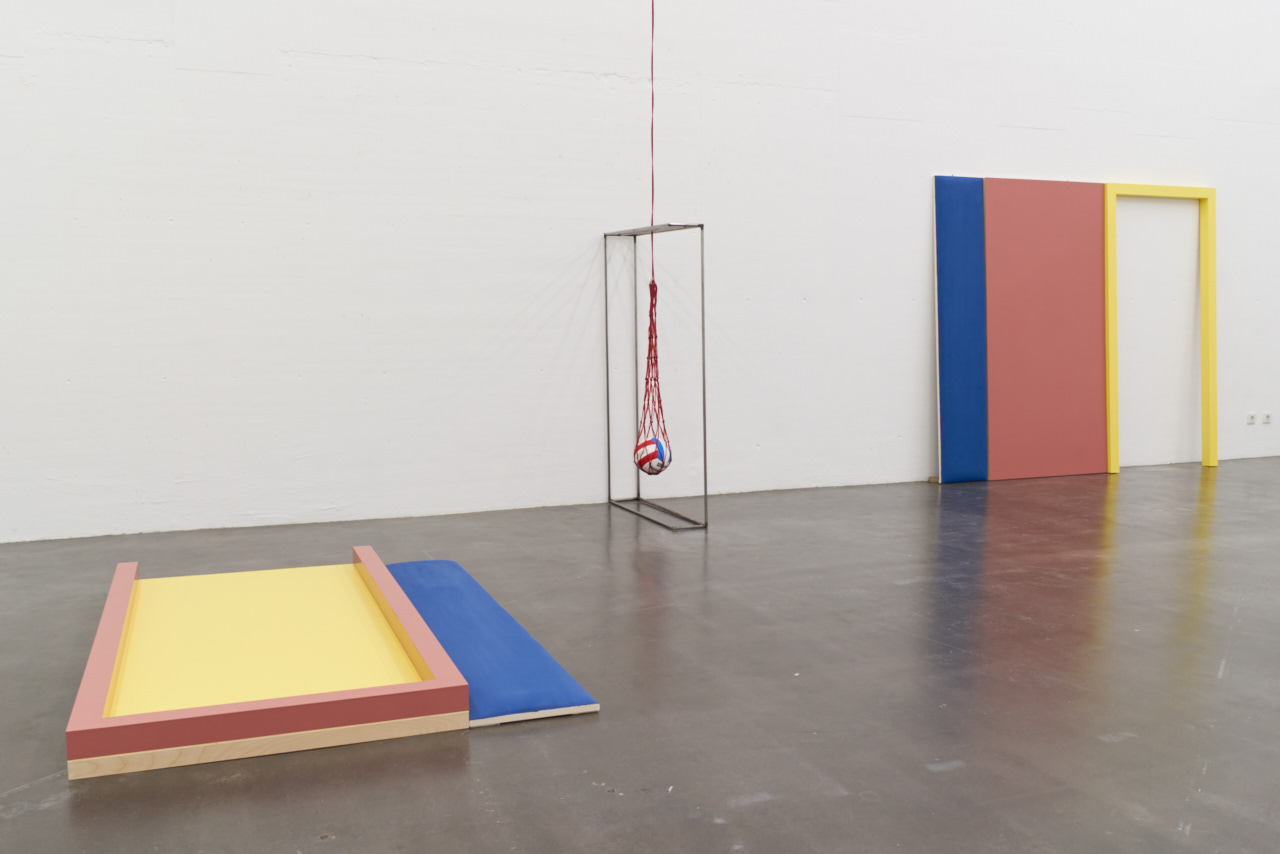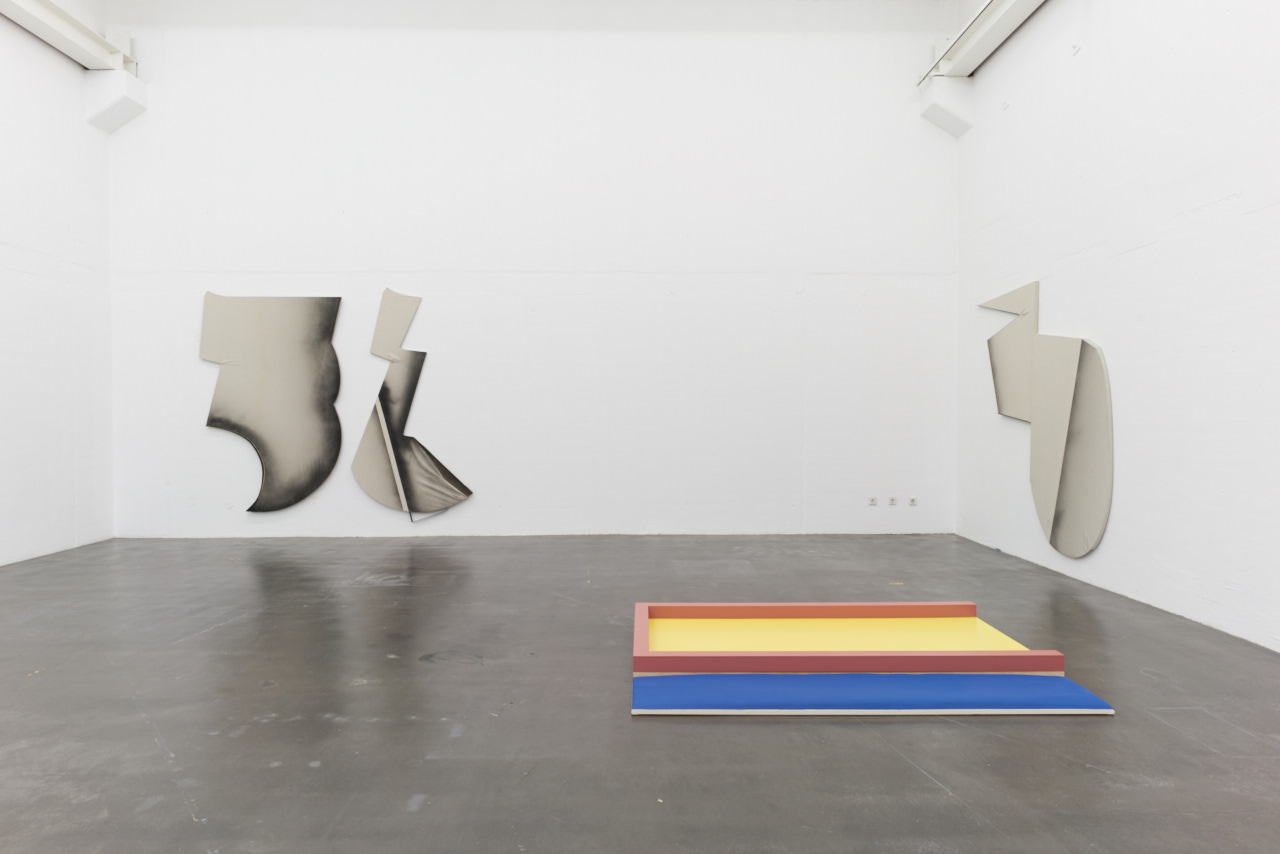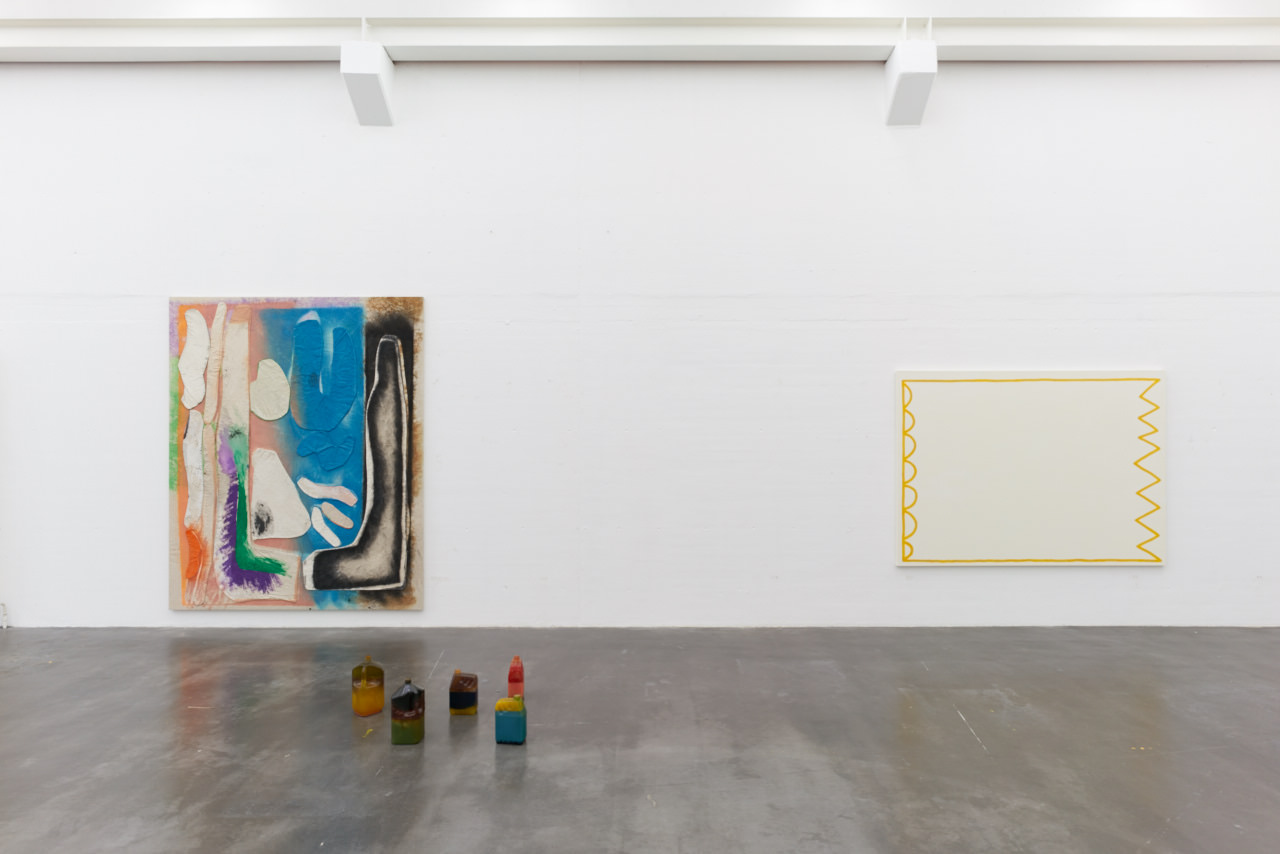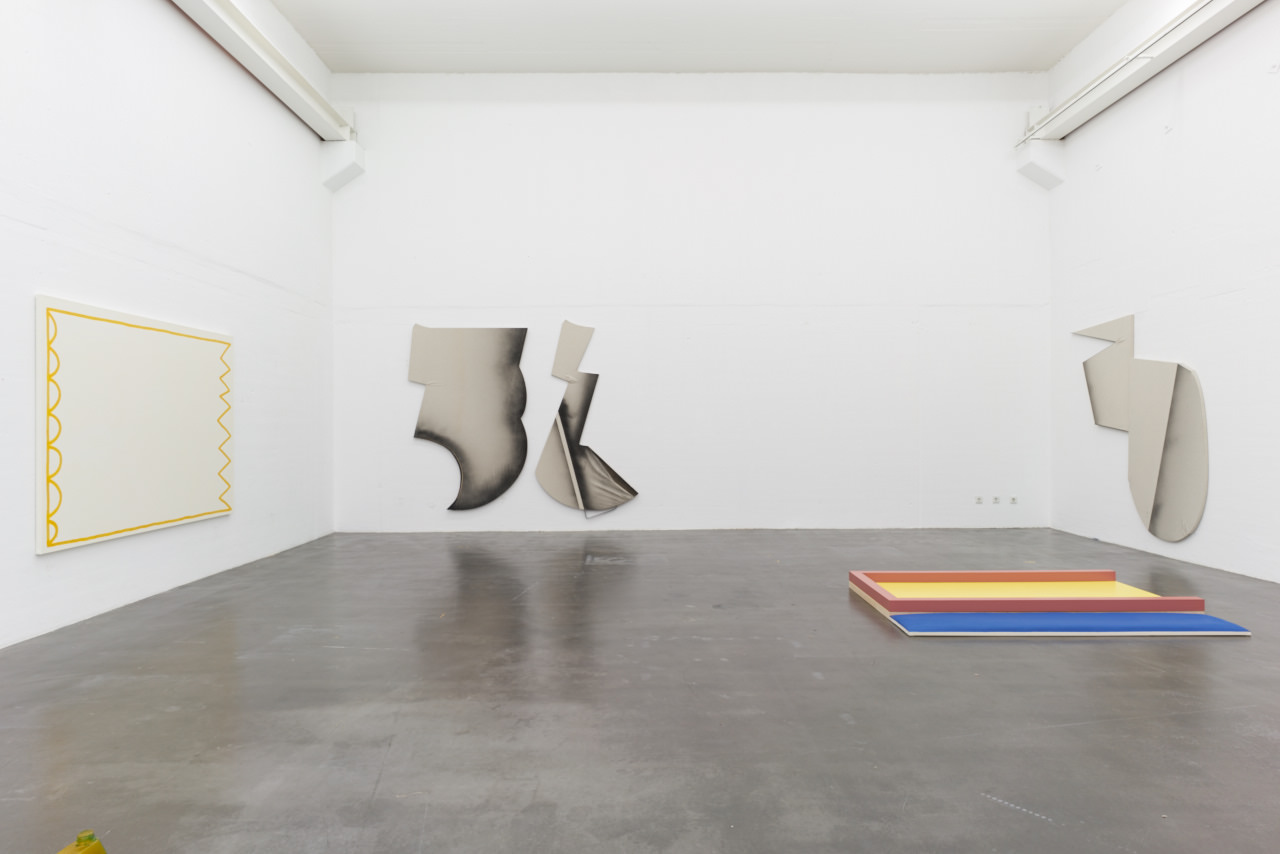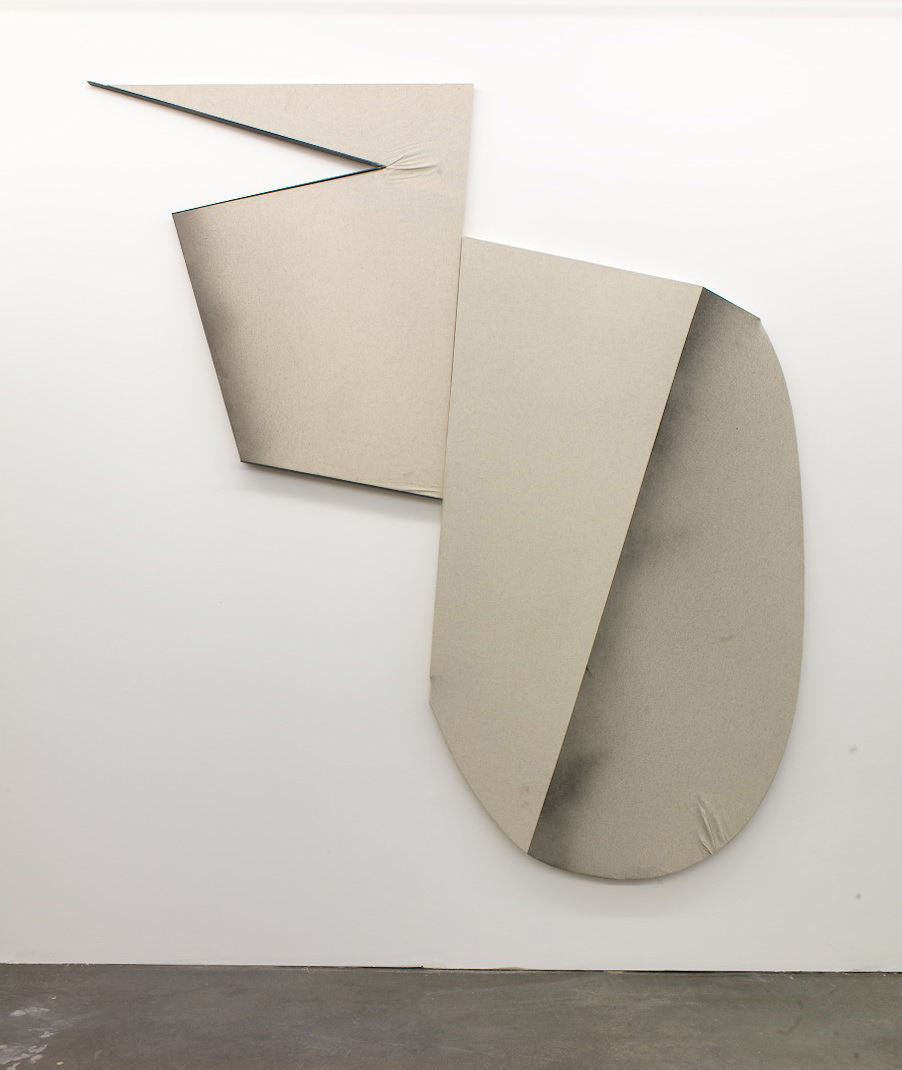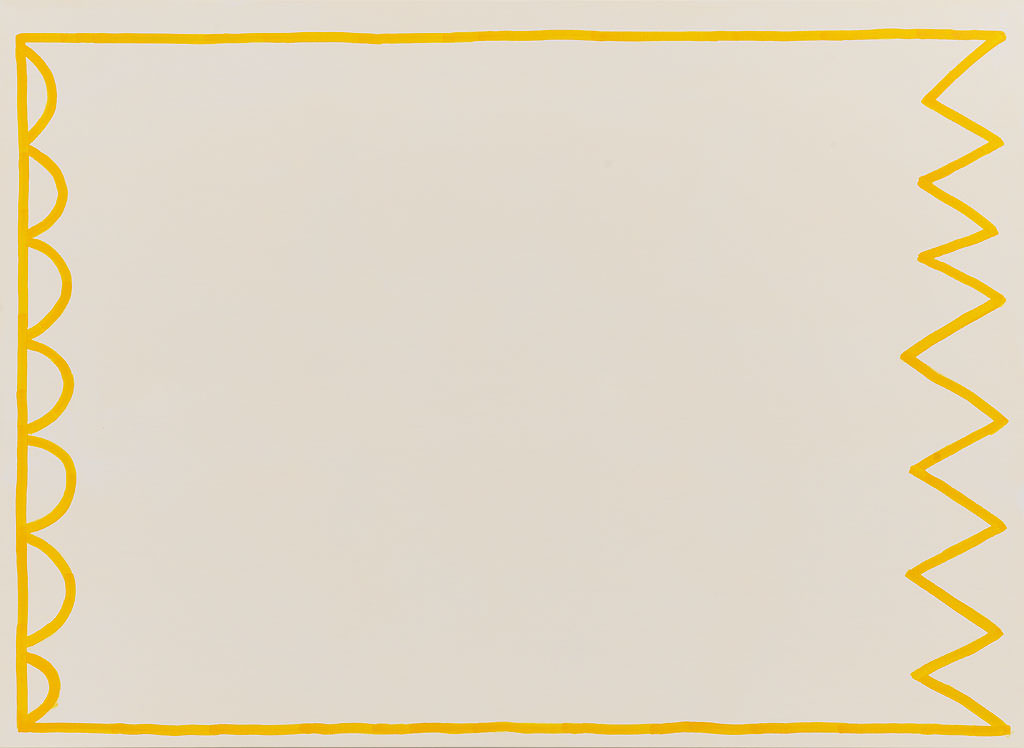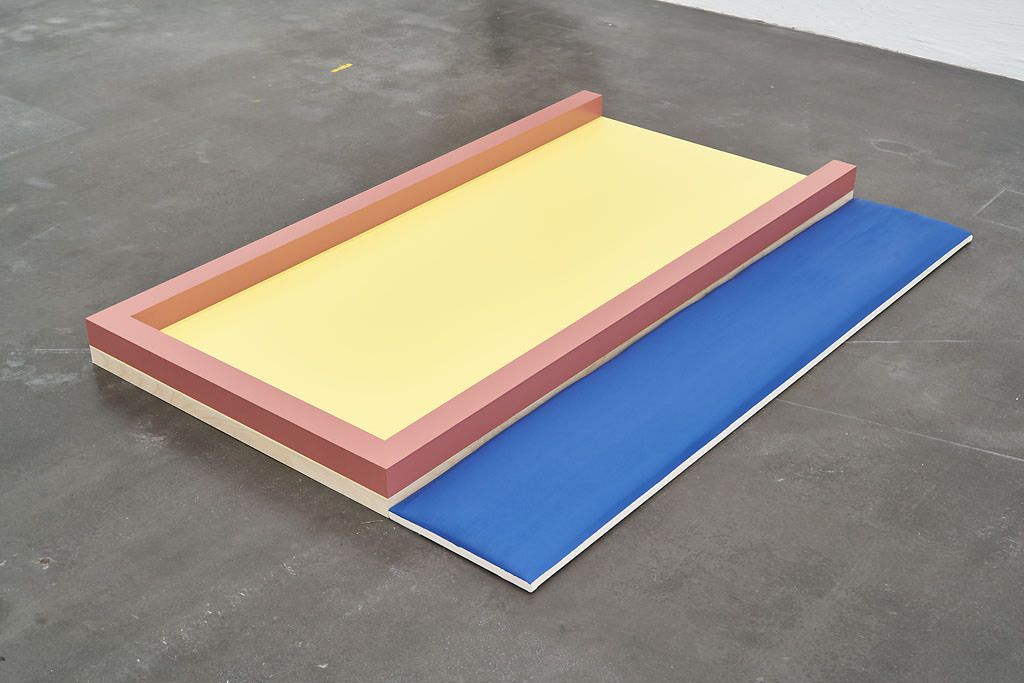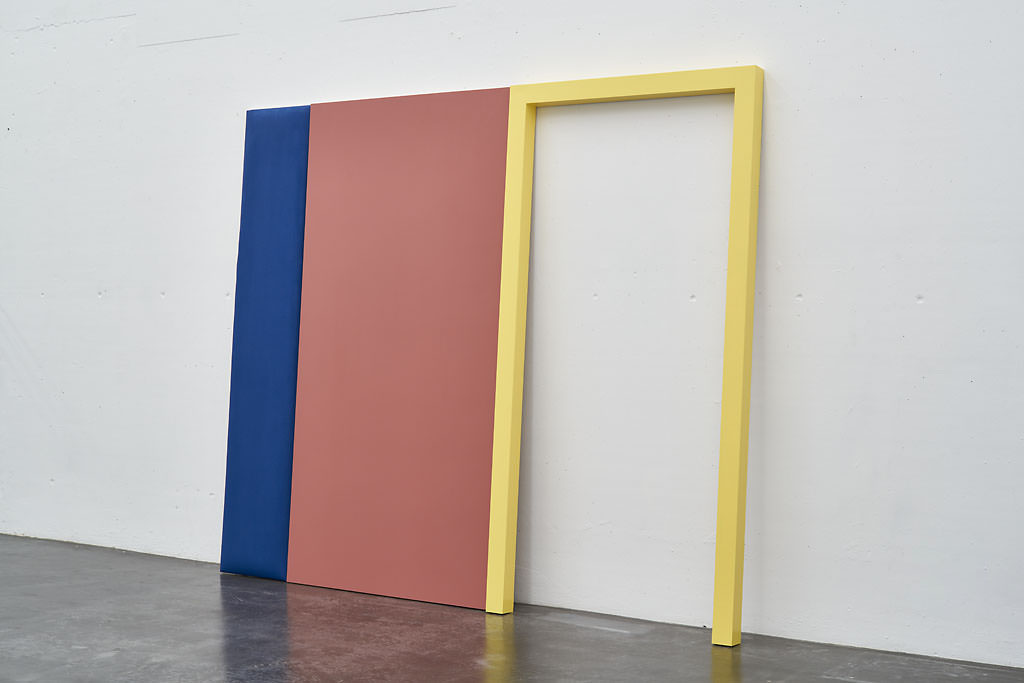„Inside-out“
Feb 26 – March 30, 2016
group exhibition with
Jonathan Binet
Alina Chaiderov
Stephen Felton
Jess Fuller
Benoit Plateus
Connor McNicholas
(for CVs and text scroll downwards)
WORK
EXHIBITION TEXT Deutsch: (for English version scroll downwards)
Was definieren wir als „Außen“, was als „Innen“, wann schauen wir in etwas hinein, wann hinaus? Sehen wir auf das Äußere oder ist es nur das „auf links“ gedrehte Innere? Die Gruppenausstellung „Inside Out“ hat sechs Künstler zusammen gestellt, die sich auf unterschiedliche Art mit diesen und ähnlichen Fragestellungen auseinandersetzen.
In den Arbeiten des New Yorker Malers Stephen Felton (Jahrgang 1975) z.B. spielt der Umriss eine entscheidende Rolle. Seine stark simplifizierten Bilder wirken skizzenhaft-zeichnerisch mit frei aus der Hand gezogenen wenigen Linien, in denen er stets pro Bild nur eine Farbe verwendet. In der ausgestellten Arbeit mit dem Titel „Enter the Pink“ scheint der Künstler mit in pink gezogenen Linien zwei Räume anzudeuten, einen „äußeren“ und einen „inneren“; In den inneren Raum scheint man durch ein skizziertes „Tor“ hineinschauen zu können – oder aber hinaus, das bleibt dabei offen. Denn der hohe Abstraktionsgrad seiner Bilder – trotz gegenständlichen Bildinhalten – ist in diesen Fragen wenig manifestiert, sondern frei.
Der belgische Künstler Benoit Plateus (Jahrgang 1972) arbeitet sowohl bildhauerisch, als auch auf der Leinwand. Seine Bildthemen findet er unter hinzuziehen älterer Filmplakate von B-Movies, die er rückseitig („hinter die Kulissen schauen“) – so dass nur wenig durchschimmert – auf die Leinwand kaschiert hat. Die noch erkennbaren Umrisse und Fragmente übermalt er zudem flächig in pastelligen Tönen, so dass am Ende nur abstrakte Fragmente erscheinen: Rückseitiges wird in den Vordergrund gerückt, Konkretes aufgelöst. Die Filmplakate hinterlassen zudem eine rasterartige Struktur aus Rechtecken, die sich daraus ergeben haben, dass die Filmplakate zusammengefaltet über Jahre in Antiquariats-Schubladen aufbewahrt wurden.
Plateus Skulpturen treiben ein ähnliches Verwirrspiel mit der Auflösung von Offensichtlichem, in diesem Fall bei der Frage, was ist Original was Abbild. Plateus, der auch fotografisch arbeitet, verwendet hierbei Plastik-Flaschen und Kanister, in denen Chemikalien für die Entwicklung von Fotos aufbewahrt wurden. Er füllt diese mit Urethan und Farbe, die in dem sich verfestigendem Material noch teilweise verläuft, je nach Drehung des Behälters durch den Künstler vertikal, horizontal oder diagonal, was ein Farb- und Material-Bild ergibt, welches jenseits der Schwerkraft-Gesetzmäßigkeiten zu sein scheint. Nachdem ein vollständig fester Aggregatszustand erreicht ist, schneidet er die Plastikflaschenhülle auf und trennt diese ab, wie bei einer Gussform. Zurück bleibt also der Abdruck, das Innere, in Gestalt des ursprünglichen Behälters.
Der junge New Yorker Künstler Connor McNicholas (Jahrgang 1990) bewegt sich mit seinen Arbeiten zwischen zweiter und dritter Dimension. Die beiden ausgestellten Arbeiten – eine auf dem Boden liegend, die andere an die Wand gelehnt – sind bis auf die monochrome Bemalung identisch und bestehen je aus drei Teilen: einem rechteckigen monochrom bemaltem Panel, ca. 8 cm tief, einem U-ähnlichen Torbogen, welcher auf dem Panel liegt und es bündig abschließt, bzw. daneben steht und einem schmalen, rechteckigen Panel, der im Gegensatz zu den beiden anderen Einheiten, eine weiche, Schaumstoff Füllung hinter der Leinwand hat und dadurch „Graubner-ähnliches“ Volumen entwickelt.
In Primärfarben Blau u. Gelb gehalten, erinnern beide an eine Tür, hinter der ein monochromer Farbraum simuliert wird. Fast positiv-negativ ähnlich wechseln bei den beiden Arbeiten die Innen-Farbe und die Außen-Farbe.
Die in St. Peterburg geborene und in Stockholm lebenden Alina Chaiderov (Jahrgang 1984 ) ist in der Ausstellung u.a. mit einer Skulptur vertreten, die aus einem Stahlrohrkorpus in schmaler offner Form besteht und durch die man hindurch schaut. Von der Decke an langer Kordel hängt von einem handelsüblichen roten Netz gehalten ein Volleyball herunter, der genau im Zentrum des Quaders frei zu schweben scheint, nur wenige Zentimeter über dem Boden. Auch hier stellen sich die Fragen nach Raumbegrenzung, Schwerkraft und Betrachterperspektive. Der Fall des Balles erstarrt förmlich in einem angedeuteten „Raum im Raum“ und scheint die Dimension „Zeit“ auszublenden.
Die in New York lebende Jess Fuller ist mit einem Großformat in der Ausstellung vertreten. Ihre Malerei ist stark von einer organischen Formensprache geprägt, die sie in Form von aus Leinwand genähten amorphen Leinwand-Fragmenten auf die Oberfläche der tragenden Leinwand bringt, die durch die sichtbaren Nähte wie „auf links gezogen“ wirken, zudem erhaben und reliefartig, gewaschen, genäht, gebleicht, in leuchtend kontrastierenden Farbspiel. Gesprayte Umrisse verstärken die Formen, sind jedoch ungenau und im Versatz mit den aufgenähten Elementbegrenzungen. Ende und Anfang der Kompositionen, Inneres und Äußeres bleiben auch hier diffus und wunderbar rätselhaft und entziehen sich auch bei dieser Künstlerposition einer klaren Definition des Betrachters.
Jonathan Binet (Jahrgang 1984), in Paris lebender, französischer Künstler, überschreitet mit seinen Wandarbeiten die Grenzen zwischen Tafelbild, Skulptur und Installation. Seine Arbeiten scheinen keine festen Grenzen zu haben u. auch kein definiertes „Vorne“ oder „Hinten“. Sie lösen sich von der quadratischen Form des klassischen Tafelbildes, und sind an einigen Stellen rund-kurvig, an anderen geometrisch-eckig. Auf ausgesägten Sperrholzplatten spannt er Leinwände, rafft Sie an einigen Stellen oder lässt sie hinter aufgebrachte, die Arbeit einfassenden Metallschienen verschwinden. Beulen, Raffungen, Aufklaffen der Leinwand, Durch- u. Einblicke auf Konstruktionen, Verstrebungen und Halterungen werden nicht kaschiert, sondern werden zum Bildthema selbst. Mit Spray aufgebrachte schwarze Farbe setzen, ähnlich wie bei Fuller, Formakzente und umreißen Teile der Arbeit. Visuell schwer greifbar sind zudem seine schwarz-weißen, kontrastierenden, mal stark abgrenzenden, schablonenartigen Farbaufträge im Kontrast zu anderen, sehr weichen, wie Staub wirkenden Farbnuancen.
EXHIBITON TEXT English
Inside Out
What do we define as “outside” and “inside” respectively? When do we look into something, and when do we look out? Do we see the outside of something, or merely the inside turned outside? The group exhibition “Inside Out” brings together six artists, who deal with these and similar questions from various perspectives.
In the works of the New York-based painter Stephen Felton (*1975), for example, the contours play a decisive role. His highly simplified paintings appear graphic and sketch-like, with only a few lines drawn freely by hand; only one colour is used for each work. In one of the works on view, “Enter the Pink”, the artist seems to intimate two distinct spaces – an “interior” and an “exterior” space – delineated by pink lines; one seems to be able to peer into – or out of – the inner space through a sketched “gate”. In which direction one’s gaze is directed remains open, since, despite representational “motifs”, the high degree of abstraction in his pictures is not manifested in such questions, but rather remains free.
The Belgian artist Benoit Plateus (*1972) works both in sculpture and on canvas. He finds the motifs for his canvases by appropriating old film posters of B-movies, which he attached in reverse onto the canvas so that only very little of the image itself can still be discerned. The barely recognisable contours and other bits and pieces are then painted over with fields of pastel tones so that, ultimately, only diffuse abstract fragments remain: The reverse side is brought to the fore, while the concrete image is broken down. What is more, the film posters reveal a grid-like structure of rectangles, which results from their being folded together and stored for numerous years in drawers or antiquarian book shops.
Plateus’ sculptures play a similar game of confusion in their search for the original and the reproduction. For these sculptures, the artist, who also works with photography, uses plastic bottles and canisters, in which chemicals used to develop photographs are stored. He fills these with urethane and paint, which spreads through the material that gradually solidifies, depending on how the artist holds and turns the container, either vertically, horizontally or diagonally, leading to a colour- and material-based composition that thwarts the physical laws of gravity. After the material has completely solidified, he cuts away the plastic casing, in the same way that casting moulds are also removed after the cast is complete. What remains is thus an impression of the interior in the form of the original container.
The works of the young New York-based artist Connor McNicholas (*1990) oscillate between two and three dimensions. The two works on view – one lying on the floor and the other leaning against the wall – are identical except for the colouring of their monochrome surfaces. Each consists of three parts: a rectangular panel with a depth of approx. 8 cm, a U-formed “archway”, which lies flush on top of the panel or stands directly next to it, and a narrow rectangular panel, which, in contrast to the other two elements, has a soft foam padding behind the canvas and thus has or rather intimates a Graubner-like voluminousness. Presented in the primary colours of blue and yellow, both objects are reminiscent of doorways, behind which a monochrome colour-space is simulated. In an almost positive-negative manner, the two works alternate the interior and exterior colours.
The Stockholm-based artist Alina Chaiderov (*1984 ) is represented in the exhibition with, among other works, a sculpture consisting of a tubular steel body shaped in a narrow, open form. A long cord hangs from the ceiling and ends in a red net, which holds a volley ball; the ball appears to hang freely in the very centre of the rectangular steel form, only a few centimetres from the floor. Here as well, questions are raised with regard to the limitation of space, gravitational force and viewer perspective. The descent of the ball is virtually frozen within a suggested space within the real space of the gallery and appears to blank out the dimension of “time”.
The New York-based artist Jess Fuller is represented in the exhibition with a large-format work. Her painting is strongly characterised by an organic language of forms, which she sews onto the surface of the canvas as amorphous pieces of cloth; as a result, the canvas appears to be turned inside out, and at the same time palpable and relief-like, washed, sewn, bleached, and bathed in a luminous play of contrasting colours. Sprayed contours emphasise the forms, even though they are merely approximate and misaligned with the sewn-on elements. The beginning and end of the compositions, interior and exterior, thus remain diffuse and wonderfully enigmatic; even within the context of this group exhibition, they evade any clear attempt at a definition on the part of the viewer.
With his wall pieces, Jonathan Binet (*1984), a French artist living in Paris, overcomes the boundaries between panel painting, sculpture and installation. His works almost appear to have no fixed borders and have no clearly defined “front” and “back”. They liberate themselves from the rectangular form of classical panel painting, and are in some cases roundly curved and in others geometrically angular. The artist stretches canvas over shaped plywood panels, gathers the fabric in certain sections or lets it disappear behind metal runners attached to the edges of the forms. The buckling, ruffling, gaping of the canvas, glimpses and views onto structures, struts and mountings are not hidden, but instead become important components of the compositions. As in the works of Jess Fuller, black spray paint emphasises the formal features and contours of the works. Less tangible on the other hand are the strongly delimiting, stencil-like and contrasting applications of paint in combination with very soft, dust-like colour nuances.
CVs:
Jonathan Binet: Born in 1984, lives in Paris. Studied at ENSBA, Paris and Beaux-Arts Saint-Etienne, Main exhibition: Balice Hertling, Paris, F, (solo show, upcoming, 2016), Carl Kostyal, London, UK (solo show, 2015), Bonner Kunstverein (solo show, 2015), Kunsthalle Sankt Gallen, CH, (solo show, 2015), Gaudel de Stampa, Paris, F (solo show, 2014), Art Basel Statements, Basel, CH (solo show, 2013), Liste Basel, CH (2014 + 2015), Occidential Temporary, Paris, F, (group show, 2015), Carlier / Gebauer, Berlin, D, (group show, 2014), Foundation D´Enterprise Richard, Paris, F (group show, 2014), Standard Oslo (group show, 2014)
Alina Chaiderov: Born in 1984, lives in Stockholm. Main Exhibitions: Publich installation City of Stockholm (2015), Present Future Illy award Artissima Turin, Italy, 2015, Antoine Levy, Paris, F (solo show, 2015)
Stephen Felton: Born in 1975, lives in New York. Studied at Massachusetts College of Art, MA and San Francisco Art Institute, CA, main exhibitions: Le Confort Moderne, Poitiers, F (solo show, 2015), Mamco Museée d´art moderne et contemporain, Geneva, CH (solo show, 2015), Frutta, Rome, I (solo show, 2015), Valentin, Paris, F (solo show, 2015), Gertrude, New York, USA (solo show, 2013), Selection of international emerging artists from Ernesto Esposito Collection (curated by Eugenio Viola), Palazzo Fruscione, Salerno, I (group show, upcoming 2016)
Jess Fuller: Lives in New York. Studied at University of Iowa, USA, main exhibitions: Herald St., London, UK (solo show, 2015), Martos Gallery, New York, USA (solo show, 2015), Gavin Brown´s Enterprise, New York, USA (group show, 2015), moreover group shows at Canada, New York, The Journal, New York, Halsey Mc Kay, East Hampton, USA
Benoit Plateus: Born in 1972, lives in Brussels. Studied at ERG, Brussels, B, Main exhibitions: Almine Rech, London, UK (duo with Jean-Baptiste Bernadet, Jan. 2016), Skibum MacArthur, Los Angeles, USA (solo show, Feb 2016), Annarumma Gallery, Napoli, I, (solo show, 2015), Albert Baronian, Brussels, B (solo show Art Brussels, 2014), Jeanrochdard, Brussel, B, (solo show, 2014), Kiosk, Ghent, B (group show, 2015), Marfa Book Co., Marfa, Texas, USA (group show, 2015), Neochrom Gallery, Turin, I (group show, 2015), Michael Thibault Gallery, Los Angeles, USA (curated by Marc LeBlanc, group show, 2014)
Connor McNicholas: Born in 1990, lives in New York. Main exhibition: Super Dakota, Brussels, B (solo show, 2016 upcoming), Tobias Naehring, Leipzig, D (group show, 2016 upcoming), Annarumma, Naples, I (group show, 2016 upcoming), Andersen´s, Copenhagen, Denmark (group show, 2015), Super Dakota, Brussels, B (group show, 2015).
